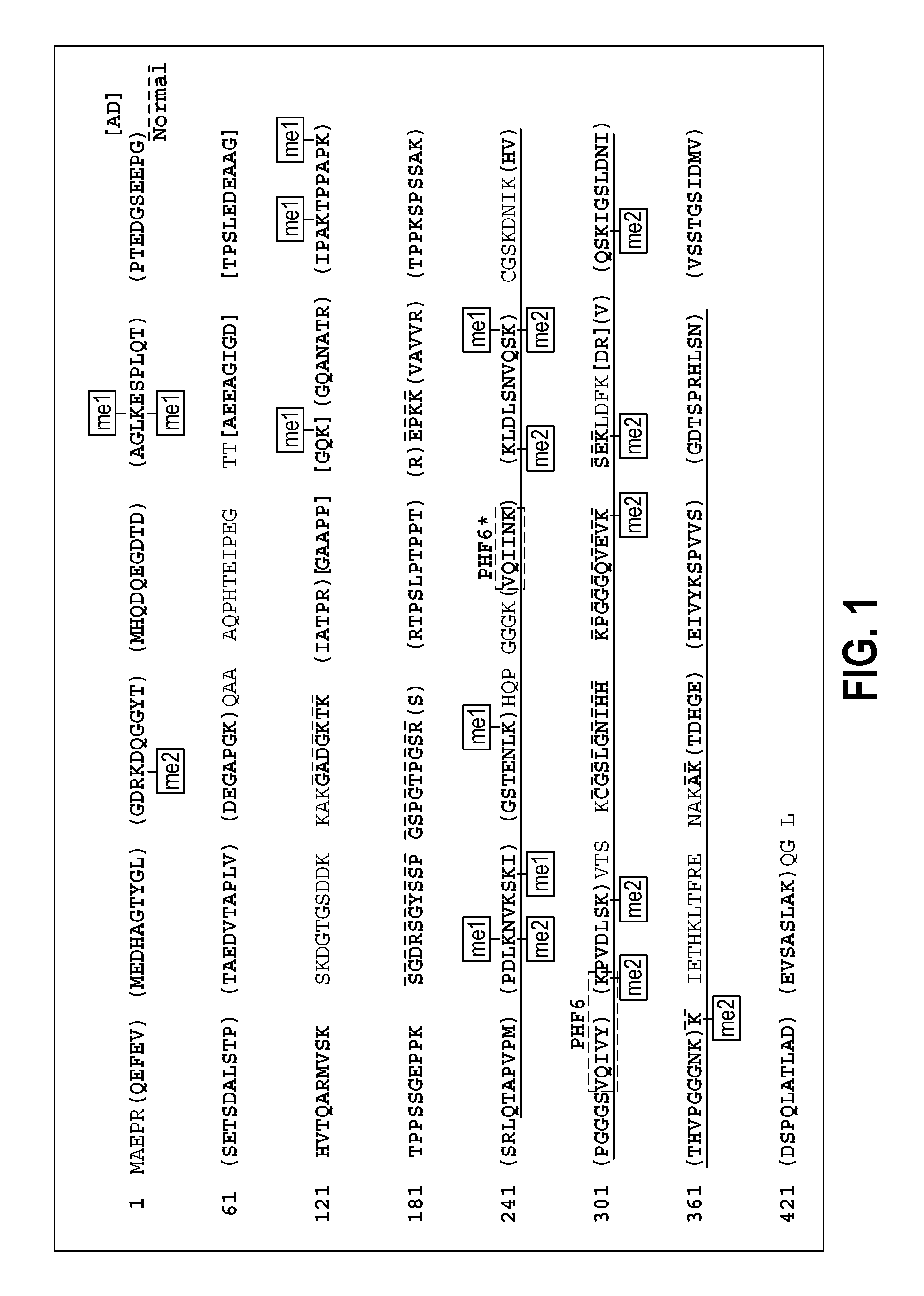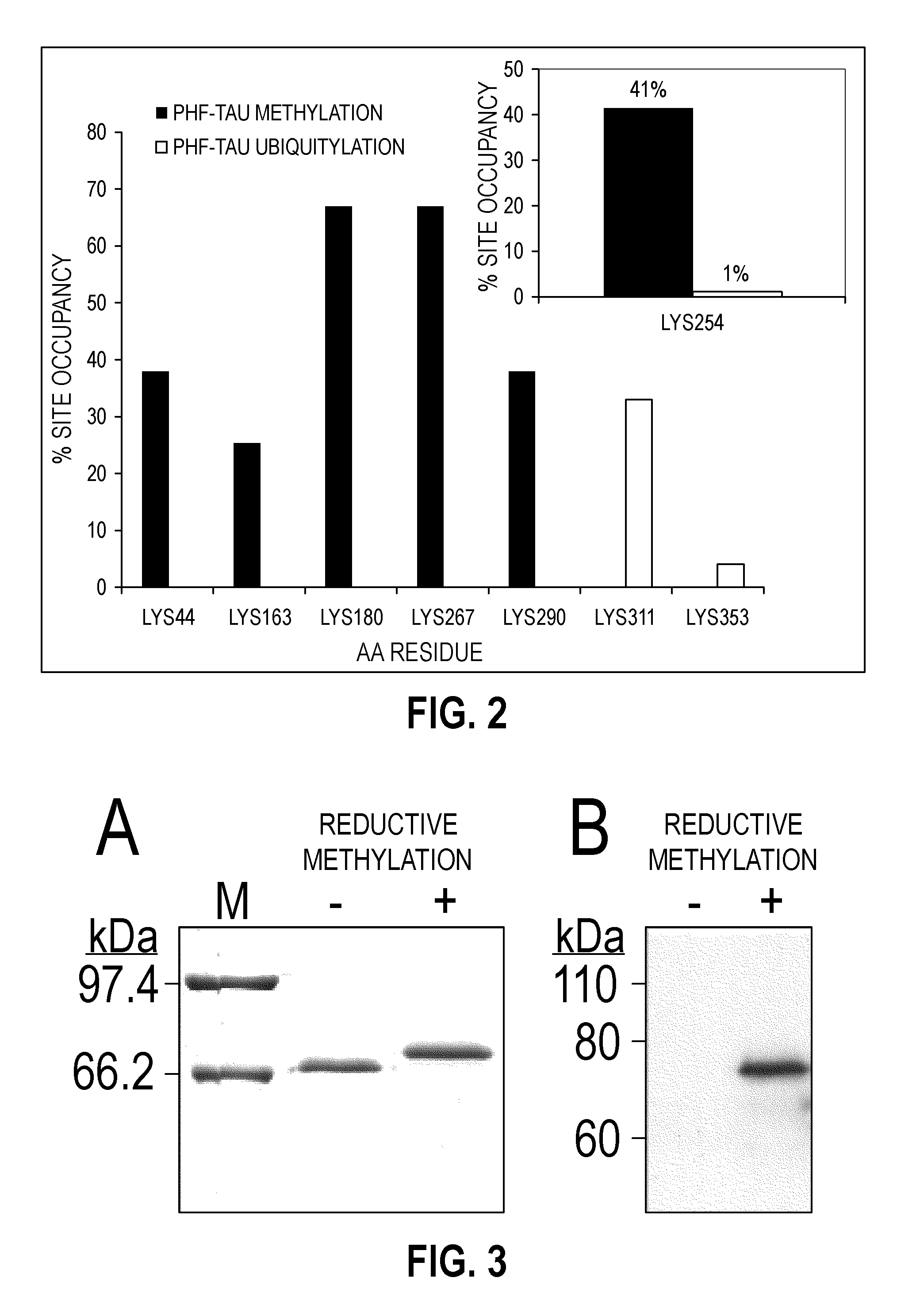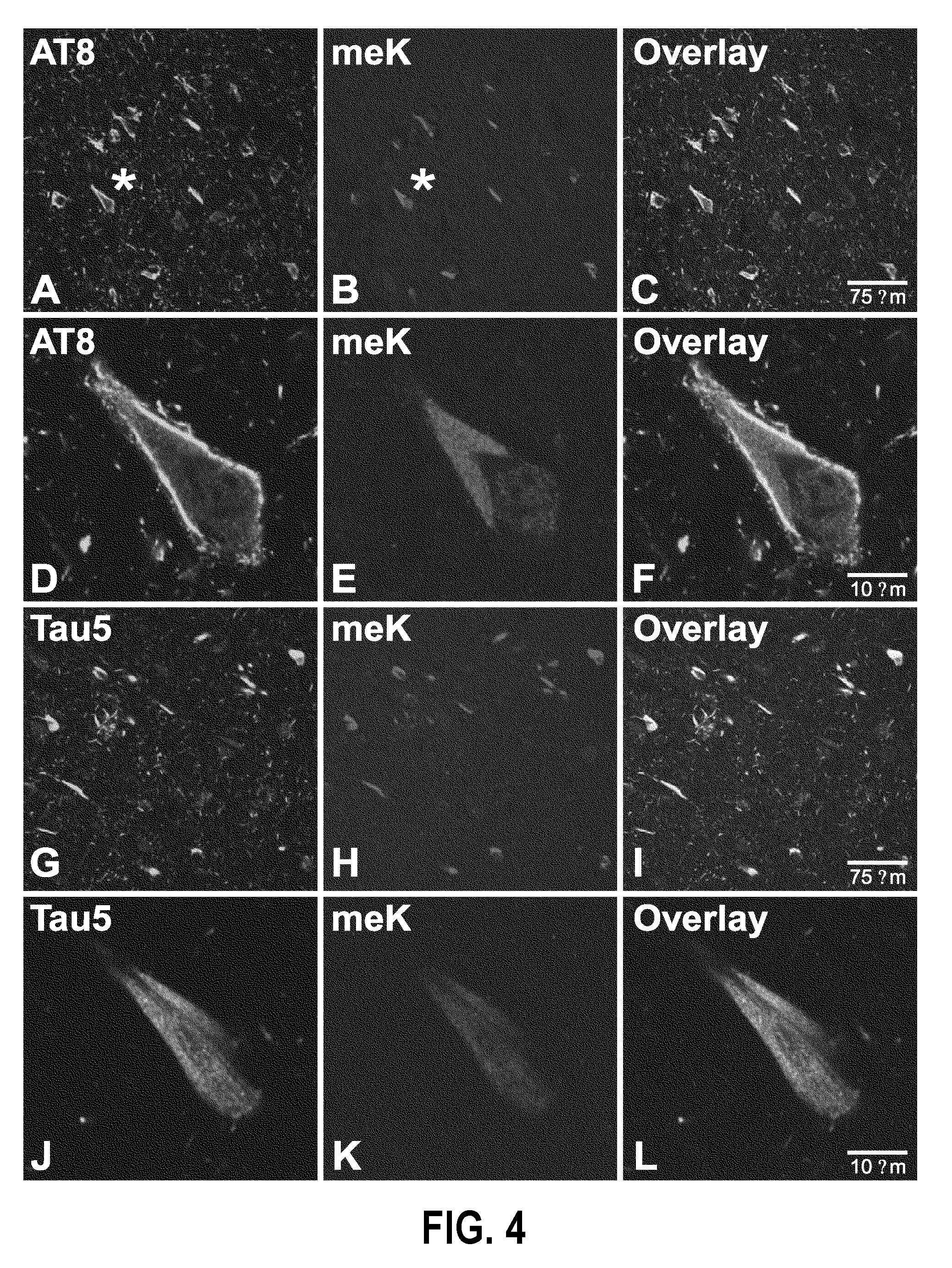Methylated Peptides Derived from Tau Protein and Their Antibodies for Diagnosis and Therapy of Alzheimer's Disease
a technology of methylated peptides and antibodies, which is applied in the field of immunogenic compositions, pharmaceutical compositions including peptides, and peptides against animals/humans, can solve the problems of inability to acquire new memories, loss of bodily functions, and health care costs, and achieve the effect of increasing disassembly and extension
- Summary
- Abstract
- Description
- Claims
- Application Information
AI Technical Summary
Benefits of technology
Problems solved by technology
Method used
Image
Examples
example 1
[0075]The following Example describes a study that determines the tau PTM signature(s) associated with neurofibrillary lesion formation. As will be apparent to those of ordinary skill in the art, the knowledge of such signature(s) provides for the isolation and / or development of tau peptides or peptide fragments or production of synthetic peptides or peptide fragments that can be used to achieve all of the various aspects of the present invention described above.
[0076]Background
[0077]To gain insight into the tau PTM signature most closely associated with neurofibrillary lesion formation at single amino acid resolution, mapping of modifications on authentic, paired helical filaments (PHFs) isolated from AD brain was performed using mass spectrometry methods, with special emphasis on Lys modifications [Cripps D, Thomas S N, Jeng Y, Yang F, Davies P, Yang A J (2006) Alzheimer disease-specific conformation of hyperphosphorylated paired helical filament-Tau is polyubiquitinated through L...
example 2
[0112]Alzheimer's disease (AD) is defined in part by the appearance of intracellular inclusions composed of the microtubule associated protein tau. The mechanisms that drive tau aggregation in the highly prevalent sporadic form of AD are not fully understood, but appear to involve abnormal post-translational modifications. To gain insight into the modifications that accompany tau lesion formation in AD, a preliminary structural analysis of tau aggregates isolated from authentic disease tissue specimens using mass spectrometry methods was conducted. The results revealed that a previously unrecognized tau modification, lysine methylation, copurified with tau aggregates. The methylation signature involved sites that are known to mediate tau ubiquitylation and other post-translational modifications, suggesting that methylation is a candidate modification for influencing tau aggregation and toxicity in disease. To extend the correlation between methylation occupancy and aggregation state...
PUM
| Property | Measurement | Unit |
|---|---|---|
| Time | aaaaa | aaaaa |
| Level | aaaaa | aaaaa |
Abstract
Description
Claims
Application Information
 Login to View More
Login to View More - R&D
- Intellectual Property
- Life Sciences
- Materials
- Tech Scout
- Unparalleled Data Quality
- Higher Quality Content
- 60% Fewer Hallucinations
Browse by: Latest US Patents, China's latest patents, Technical Efficacy Thesaurus, Application Domain, Technology Topic, Popular Technical Reports.
© 2025 PatSnap. All rights reserved.Legal|Privacy policy|Modern Slavery Act Transparency Statement|Sitemap|About US| Contact US: help@patsnap.com



